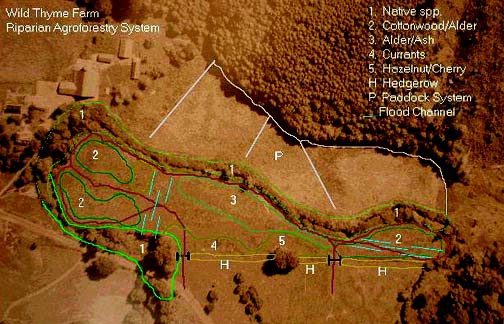| Botanical Name |
Common Name |
Comments |
| Acer circinatum |
Vine Maple |
Shade tolerant
Excellent soil-binding roots
Forage for browsing animals
|
| Acer macrophyllum |
Big Leaf Maple |
Forage for browsing animals when young
Excellent shade producer
*seeds attract small mammals
|
| *Alnus rubra |
Red Alder |
Great for regenerating disturbed sites
Rapid growth
*do not plant on stream bank as shallow root system often causes trees to topple, tearing out the banks
|
| *Amelanchier spp. |
Serviceberry |
Shade tolerant
Forms extensive thickets
Food source for wide variety of birds
Twigs attractive to browsing animals
|
| *Cornus stolonifera |
Red Osier Dogwood |
Shade tolerant
Excellent soil-binding roots
Food for wildlife
|
| Corylus cornuta |
Hazelnut |
Shade tolerant
Excellent soil-binding roots
Food for wildlife
|
| Crataegus douglassi |
Black Hawthorn |
Excellent soil-binding roots
Well adapted to disturbed sites
Provide food & cover to wildlife, especially birds
May repel browsing animals
|
| Fraxinus latifolia |
Oregon Ash |
Seeds and twigs are browsed by animals and birds
|
| Holodiscus discolor |
Oceanspray |
Oceanspray Shade tolerant
Good soil-binding characteristics
Food for wildlife
|
| Lonicera involucrate |
Black Twinberry |
Good soil-binding roots
Provides food for wildlife, especially birds
|
| Mahonia spp. |
Oregon Grape |
Shade tolerant
Excellent control of soil erosion
Provides food for wildlife
|
| Physocarpus capitatus |
Ninebark |
Shade tolerant
Excellent soil-binding roots
Dense foliage provides wildlife habitat
|
| *Populus trichocarpa |
Black Cottonwood |
Great for restoring flood-prone lands
Rapid growth
Provides ideal sites for nesting birds, especially the bald eagle and blue heron in spring
|
| Prunus emarginata |
Bitter Cherry |
Provides food for wildlife, especially birds
|
| *Rosa nutkana |
Nootka Rose |
Excellent soil-binding roots
Forms thickets for wildlife cover
Provides food for wildlife
May repel small or browsing animals
|
| Rubus spectabilis |
Salmonberry |
Shade tolerant
Good soil-binding roots
Quick spreading
Well adapted to eroded or disturbed sites
Provides food for wildlife
|
| Rubus |
Thimbleberry |
Good soil-binding roots
Quick spreading
Provides food for wildlife
|
| *Salix spp. |
Willow |
Excellent soil-binding roots
Rapid growth
Branches hang over water providing aquatic insects for fish food chain as well as shade for streams
|
| Sambucus cerulea |
Red Elderberry |
Provides food for wildlife, especially birds
|
| *Spirea douglassi |
Hardhack |
Provides food for birds in the winter
Forms thickets providing cover for wildlife
Easily survives competition from grasses, but is sometimes too aggressive and can out-compete other plantings
|
| *Symphoricarpos albus |
Snowberry |
Shade tolerant
Good soil-binding characteristics
Provides food for wildlife throughout winter
|
| Vaccinium ovatum |
Evergreen Huckleberry |
Shade tolerant
Provides food for wildlife
|

